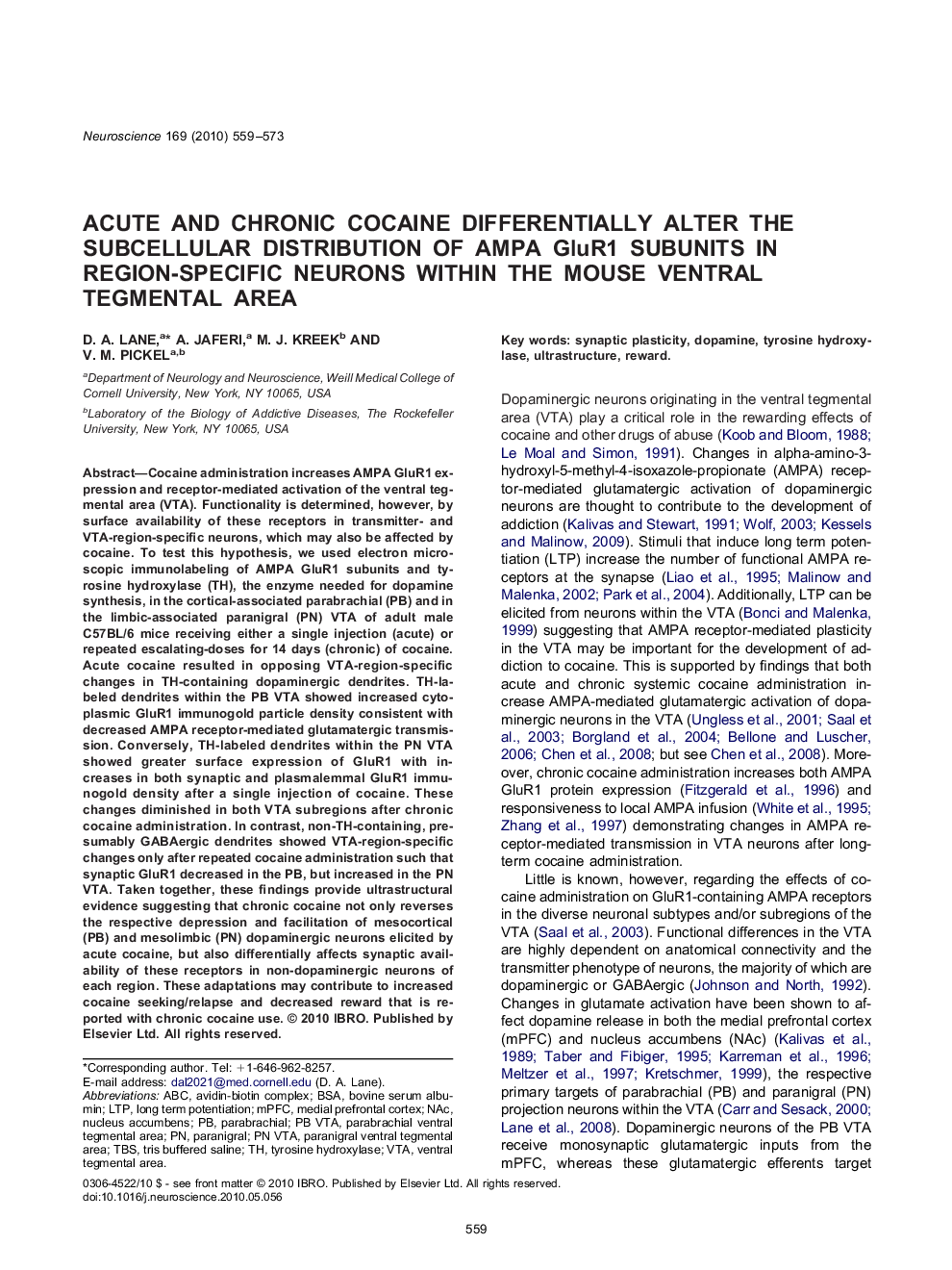| کد مقاله | کد نشریه | سال انتشار | مقاله انگلیسی | نسخه تمام متن |
|---|---|---|---|---|
| 4339345 | 1295751 | 2010 | 15 صفحه PDF | دانلود رایگان |

Cocaine administration increases AMPA GluR1 expression and receptor-mediated activation of the ventral tegmental area (VTA). Functionality is determined, however, by surface availability of these receptors in transmitter- and VTA-region-specific neurons, which may also be affected by cocaine. To test this hypothesis, we used electron microscopic immunolabeling of AMPA GluR1 subunits and tyrosine hydroxylase (TH), the enzyme needed for dopamine synthesis, in the cortical-associated parabrachial (PB) and in the limbic-associated paranigral (PN) VTA of adult male C57BL/6 mice receiving either a single injection (acute) or repeated escalating-doses for 14 days (chronic) of cocaine. Acute cocaine resulted in opposing VTA-region-specific changes in TH-containing dopaminergic dendrites. TH-labeled dendrites within the PB VTA showed increased cytoplasmic GluR1 immunogold particle density consistent with decreased AMPA receptor-mediated glutamatergic transmission. Conversely, TH-labeled dendrites within the PN VTA showed greater surface expression of GluR1 with increases in both synaptic and plasmalemmal GluR1 immunogold density after a single injection of cocaine. These changes diminished in both VTA subregions after chronic cocaine administration. In contrast, non-TH-containing, presumably GABAergic dendrites showed VTA-region-specific changes only after repeated cocaine administration such that synaptic GluR1 decreased in the PB, but increased in the PN VTA. Taken together, these findings provide ultrastructural evidence suggesting that chronic cocaine not only reverses the respective depression and facilitation of mesocortical (PB) and mesolimbic (PN) dopaminergic neurons elicited by acute cocaine, but also differentially affects synaptic availability of these receptors in non-dopaminergic neurons of each region. These adaptations may contribute to increased cocaine seeking/relapse and decreased reward that is reported with chronic cocaine use.
Journal: Neuroscience - Volume 169, Issue 2, 25 August 2010, Pages 559–573